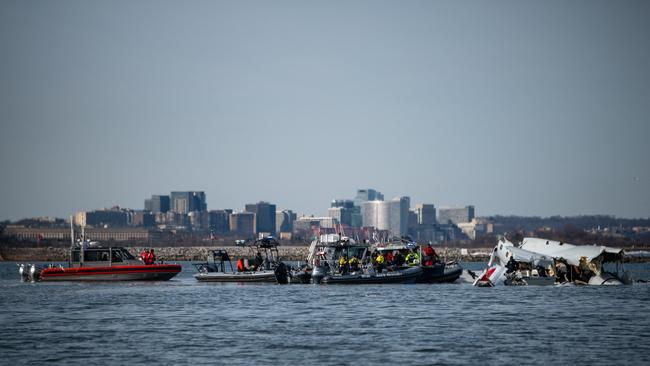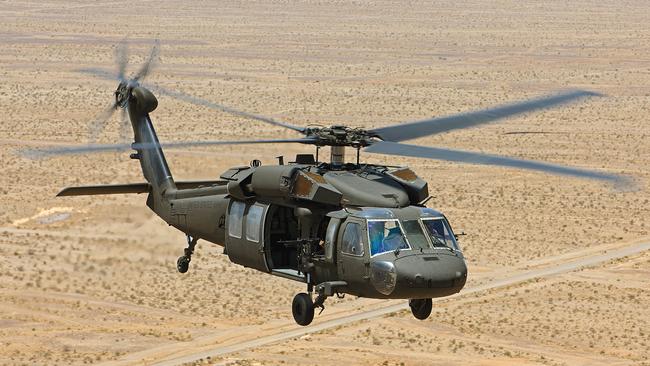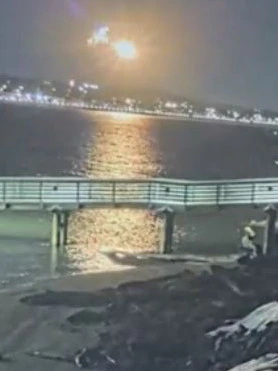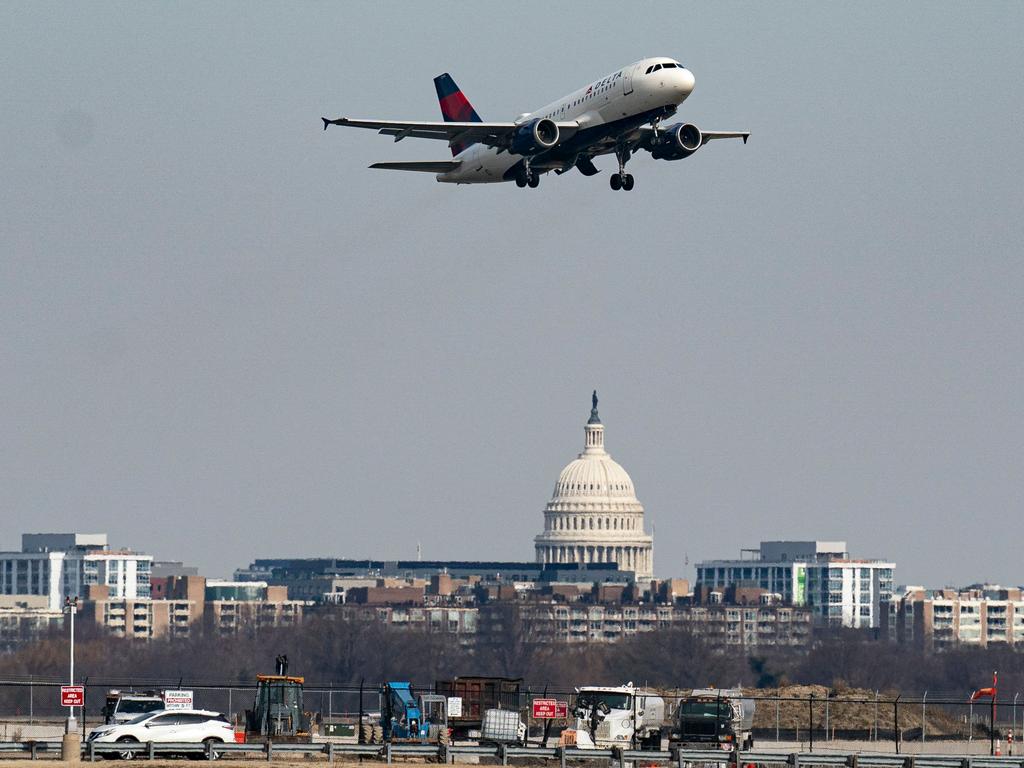US Army helicopter in deadly crash served as ‘taxi service’ to Washington VIPs
The Black Hawk that collided with an airliner last week belonged to an aviation brigade responsible for ferrying leaders and ensuring continuity of government operations
The US Army Black Hawk helicopter that collided with an American Airlines flight landing at Ronald Reagan National Airport was training to perform one of the unit’s key missions: transporting top US leaders to a safe zone in the event of an attack on the nation’s capital.
But the deadly Wednesday crash between the military helicopter and the commercial airliner that killed 67 people underscored the risks of flying demanding training missions in Washington’s congested airspace, and raises questions about the unit’s more routine role ferrying senior officials around Washington.
The Federal Aviation Administration on Friday indefinitely suspended most helicopters from flying near Reagan National, and the Army ordered the 12th Aviation Battalion, the unit involved in the accident, to suspend flights until Saturday, later amended by the Transportation Department to extend until after the National Transportation Safety Board completes its initial investigation into the crash, likely weeks away.

A group of congressional lawmakers representing districts surrounding the airport, however, asked Defence Secretary Pete Hegseth in a letter Friday to extend the pause indefinitely and conduct a comprehensive safety review.
The Army on Friday identified two of the Black Hawk aviators – Chief Warrant Officer 2 Andrew Loyd Eaves, 39, of Great Mills, Maryland, and Staff Sergeant Ryan Austin O’Hara, 28, of Lilburn, Georgia.
On Saturday, the Army named Captain Rebecca M. Lobach, of Durham, North Carolina, as the third crew member who died.
The 12th Aviation Battalion, based at nearby Fort Belvoir, Virginia, has a decades-long history of flying top officials in and out of hot spots, from Vietnam to Lebanon.
Today, the unit operates primarily inside the US, and is also responsible for “continuity of operations plan,” to allow the government to continue operating should an event, like 9/11, take place.
It also ferries top military and other officials in and around the nation’s capital in helicopters known as “gold tops” because they are specially painted to highlight their mission.
Gold tops have become in effect a high-end air taxi service for Washington VIPs, taking passengers to bases and other locations in Pennsylvania, Virginia and Maryland and in some cases, beyond.
The use of helicopters around Washington has become so frequent that the sound of the whirling blades has become ubiquitous at the Pentagon.
Defence officials can look out their windows daily and see them landing and taking off, sometimes in pairs.
Army helicopters sometimes ferry three- and four-star generals from Fort Belvoir to the Pentagon, shaving 45 minutes or more off a trip by car, said Andrew Logan, a Washington resident who co-founded Helicopters of DC, a website that tracks helicopter operations.
The Air Force’s 1(st) Helicopter Squadron, based at Joint Base Andrews in Maryland, also has responsibility for ferrying senior government officials and VIPs around Washington, a mission its pilots sometimes discuss over the radio, Mr Logan said.
“I’ve heard pilots saying they like being a taxi service for generals,” he said.
The Army battalion’s role is a critical one, military officials said, and transporting top military officers to make more efficient use of their time is largely necessary, not an entitlement, especially when they need to get to between meetings outside the region, and then return to the Pentagon or the White House, said one retired senior aviation officer.
But the crash has prompted debate about how that role should be carried out in the congested airspace around the nation’s capital, particularly close to Reagan National, which is notorious among pilots for its short runways, heavy congestion, and subject to airspace restrictions near the White House and Pentagon.
While pilots noted that helicopters and planes have flown safely in close proximity for decades around Reagan National, there have been close calls, including one earlier this week, officials said.
“Let’s make their flight path at least a mile laterally separate,” said one former Army helicopter pilot who now flies for a major commercial air carrier.
“At no point should [military helicopters] cross the approach corridor, at least, if it does, it should be at least a mile away from the airport where it crosses the approach corridor.”
The pilot, who routinely flies in and out of Reagan National, said it is his least favourite airport, because of the short runways and prohibited airspace, but also because of the sheer volume of traffic.
He estimated that he encounters military helicopters in the area about 75 per cent of the time.

Finding new routes for the helicopters is challenging due to the amount of restricted airspace in Washington around the White House, the Capitol and other sites.
Some former pilots insist the training and the flight operations the battalion does along the Potomac River near the airport is critical, and reducing the training would have negative effects on safety as well.
“Fewer flight hours result in reduced proficiency and reduced proficiency can result in more accidents and more accidents could lead to more deaths,” said Brad Bowman, senior director at the Foundation for the Defense of Democracies and a former commander of Charlie Company the 12th Aviation Battalion, who flew top US officials around on September 11, 2001, and the days after.
The Pentagon and NTSB have launched investigations into the midair collision.
Investigators are probing what the air-traffic control operator told the helicopter pilots, what prompted the decision to change the runway the commercial jet would use, and if the Black Hawk was flying too high.

Defence officials said the Black Hawk was higher than authorised by as much as 100 feet (30.5 metres) and may have been off course.
An internal Federal Aviation Administration review of the accident said configuration of tower staffing was “not normal for the time of day and volume of traffic”.
The review said responsibilities overseeing helicopters as well as plane departures and arrivals were combined, as were other positions, according to the internal FAA report. Periodically combining responsibilities in air-traffic control facilities is common.
Washington, DC’s fire chief, John Donnelly Sr, said that 28 of the 41 bodies recovered from the crash site have been identified.
Donnelly also said he believes the body of the jet needs to be taken out of the Potomac River before more remains are found. Work on pulling the plane out of the water is expected to start, he said.
The crew of the Black Hawk had at least 1500 flight hours among them, according to the Army, and hundreds of those hours were flying around Washington.
Eaves, the instructor pilot on the Black Hawk, was a decorated service member who served in the US Navy from August 2007 to September 2017, then transitioned to the Army. His remains haven’t been recovered yet, the Army said.
“We ask that you pray for our family and friend and for all the other families that are suffering today,” Eaves’s widow, Carrie Eaves, wrote on Facebook Friday. “We ask for peace while we grieve.”
O’Hara, the crew chief on the flight, was a decorated soldier who had served in the military for 10 years and had deployed to Afghanistan from March 2017 to August 2017.
He was married, with an 18-month-old son. His remains are believed to have been recovered from the crash site, the Army said.
-David S. Cloud contributed to this article
The Wall Street Journal





To join the conversation, please log in. Don't have an account? Register
Join the conversation, you are commenting as Logout